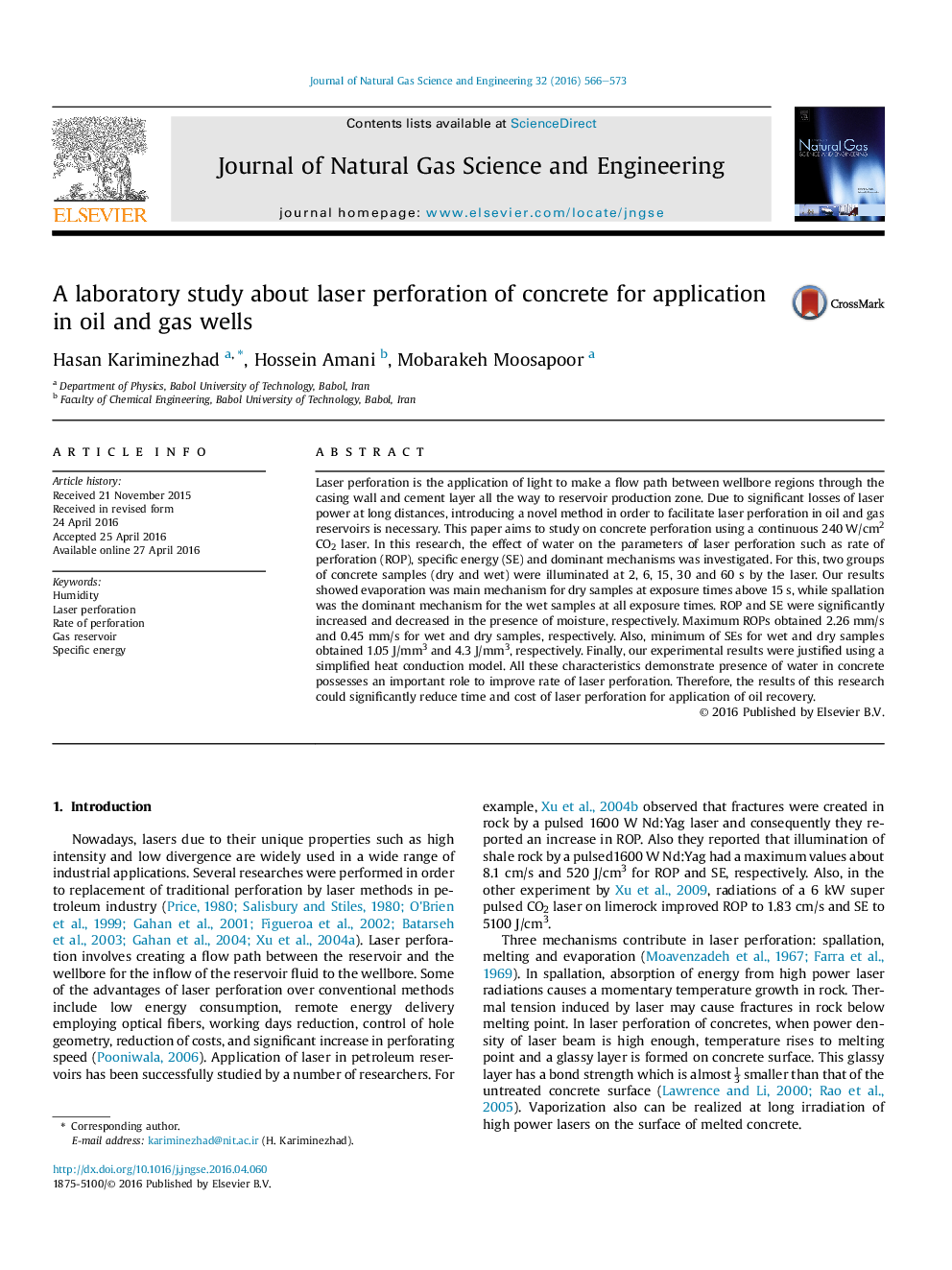| Article ID | Journal | Published Year | Pages | File Type |
|---|---|---|---|---|
| 1757256 | Journal of Natural Gas Science and Engineering | 2016 | 8 Pages |
•In this work, concrete perforation using a continuous wave 240 W/cm2 CO2 laser was studied.•Effect of water on the parameters of laser perforation was investigated.•Presence of water showed a significant growth in rate of perforation.•The experimental results were justified using a simplified heat conduction model.•The results could be the subject for future studies to improve laser perforation.
Laser perforation is the application of light to make a flow path between wellbore regions through the casing wall and cement layer all the way to reservoir production zone. Due to significant losses of laser power at long distances, introducing a novel method in order to facilitate laser perforation in oil and gas reservoirs is necessary. This paper aims to study on concrete perforation using a continuous 240 W/cm2 CO2 laser. In this research, the effect of water on the parameters of laser perforation such as rate of perforation (ROP), specific energy (SE) and dominant mechanisms was investigated. For this, two groups of concrete samples (dry and wet) were illuminated at 2, 6, 15, 30 and 60 s by the laser. Our results showed evaporation was main mechanism for dry samples at exposure times above 15 s, while spallation was the dominant mechanism for the wet samples at all exposure times. ROP and SE were significantly increased and decreased in the presence of moisture, respectively. Maximum ROPs obtained 2.26 mm/s and 0.45 mm/s for wet and dry samples, respectively. Also, minimum of SEs for wet and dry samples obtained 1.05 J/mm3 and 4.3 J/mm3, respectively. Finally, our experimental results were justified using a simplified heat conduction model. All these characteristics demonstrate presence of water in concrete possesses an important role to improve rate of laser perforation. Therefore, the results of this research could significantly reduce time and cost of laser perforation for application of oil recovery.
Graphical abstractFigure optionsDownload full-size imageDownload high-quality image (162 K)Download as PowerPoint slide
